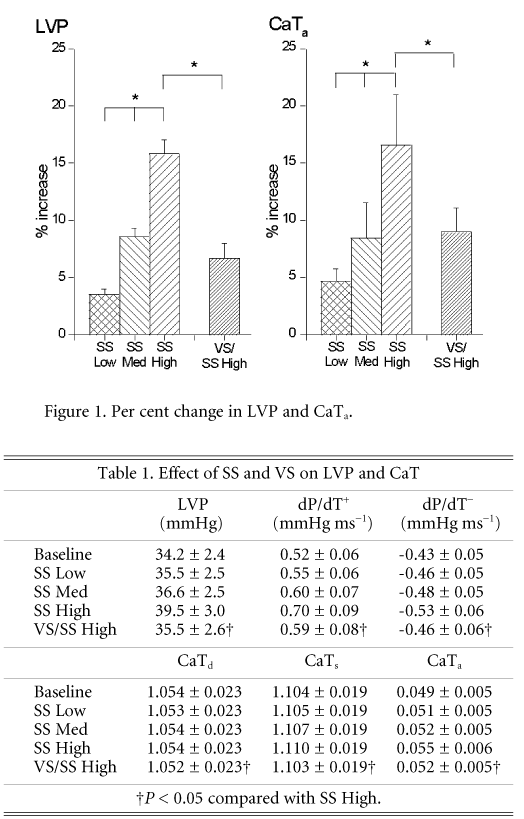Cellular and pharmacological studies have shown that the positive inotropic effect with adrenergic stimulation is mediated by changes in Ca2+ homeostasis. The effects of direct autonomic nerve stimulation on Ca2+ transients (CaT) have not been investigated in the whole heart. It was the aim of this study to examine (1) the changes in CaT and left ventricular (LV) inotropy with sympathetic stimulation (SS) and (2) the effects of background vagal stimulation (VS) on these changes, in the isolated heart with intact dual autonomic innervation.
Adult male NZW rabbits (2.4 ± 0.1 kg, mean ± S.E.M., n = 8) were humanely killed with an overdose of I.V. Sagatal. Hearts were isolated and the thoracic spine with sympathetic outflow preserved with both vagus nerves isolated at the mid-cervical region. The preparation was perfused with Tyrode solution (37 °C) in constant flow Langendorff mode via the ascending aorta and loaded with fura-2 AM. After washout, epicardial fluorescence (F) from the LV free wall was measured at 510 nm for excitation wavelengths 340 ± 13 and 380 ± 10 nm and CaT was measured as the F340/F380 ratio. LV pressure (LVP) was measured via an intraventricular balloon. Measurements were made at steady state (right ventricular pacing, 250 b.p.m.) during (1) SS at 2 [low], 5 [med] and 10 [high] Hz, and (2) high SS with background bilateral VS at 20 Hz (VS/SS High), and analysed using ANOVA.
The results are as follows. (1) SS resulted in a frequency-dependent increase (P < 0.05) in LVP, dP/dT+ and dP/dT– (see Table 1). Diastolic level of CaT (CaTd) was unchanged during SS whilst peak systolic level of CaT (CaTs) and CaT amplitude (CaTa) was increased in a frequency-dependent manner (P < 0.05). (2) Background VS inhibited the changes (P < 0.05) in LV inotropy and CaT with SS (see Fig. 1 and Table 1).
In conclusion, sympathetic nerve stimulation increased systolic Ca2+ and Ca2+ transient amplitude in the isolated, innervated rabbit heart in a frequency-dependent manner, in line with inotropic changes. These changes were inhibited in the presence of background vagus nerve stimulation.
This work was supported by a British Heart Foundation grant.
All procedures accord with current UK legislation.

